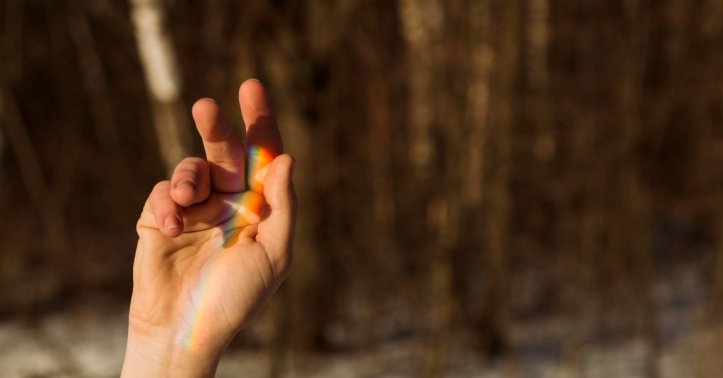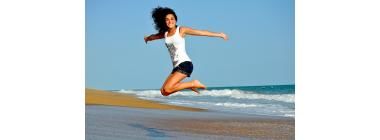
Get enough vitamin D even in cold climate
Getting enough vitamin D in a cold climate is challenging but absolutely achievable with a combination of smart strategies.
The core problem in cold climates is the lack of sufficient UVB rays from the sun, which your skin needs to produce vitamin D. This is due to two main factors:
-
Reduced Daylight Hours: Shorter days mean less overall time the sun is even out.
-
Sun Angle: In the winter, the sun is lower in the sky. The UVB rays we need for vitamin D synthesis are filtered out by the atmosphere at this angle. This is true even on bright, sunny winter days.
Here is a detailed guide on how to ensure you get enough vitamin D, even when it's cold and dark.
1. Smart Sun Exposure (When Possible)
You can't rely on this alone in winter, but you should take advantage of it when conditions allow.
-
Timing is Everything: Aim for sun exposure during the hours of 10:00 AM to 3:00 PM. This is when the sun is at its highest point, and UVB rays are most available, even in winter.
-
Short Periods are Key: You don't need to tan or burn. Exposing a large area of skin (like your face, arms, and legs) for 10-30 minutes, depending on your skin tone (lighter skin needs less time, darker skin needs more), a few times a week can be sufficient in the warmer months. In winter, even a midday face-and-hands exposure during a walk is beneficial.
-
No Sunscreen for Brief Exposure: To produce vitamin D, you must be without sunscreen for this short period. After 10-30 minutes, be sure to apply sunscreen to prevent damage. Never stay in the sun long enough to turn pink or burn.
2. Dietary Sources: Fortified Foods are Your Best Friend
Since natural food sources of vitamin D are limited, fortified foods are crucial in cold climates.
-
Fortified Milk and Plant-Based Milks: Most cow's milk and many almond, oat, and soy milks are fortified with vitamin D. Check the label.
-
Fortified Orange Juice: Some brands have vitamin D added.
-
Fortified Cereals: Many breakfast cereals are fortified. Again, check the nutrition label.
-
Fatty Fish: These are the best natural food sources. Include:
-
Salmon (especially wild-caught)
-
Mackerel
-
Tuna
-
Sardines
-
Herring
-
Egg Yolks: Eggs contain a small amount of vitamin D, particularly if the chickens were fed a vitamin D-enriched diet.
-
Beef Liver and Mushrooms: These contain small amounts. Some mushrooms (like shiitake) exposed to UV light can have higher levels.
3. Vitamin D Supplements: The Most Reliable Solution
For people living in northern latitudes, supplementation is often the most practical and effective way to maintain vitamin D levels throughout the winter.
-
Vitamin D3 (Cholecalciferol): This is the same type your body makes from the sun and is generally considered more effective at raising blood levels than D2. It's usually derived from sheep's wool (lanolin) and is suitable for most people.
-
Dosage: The recommended daily allowance (RDA) is 600-800 IU for most adults. However, many experts believe this is too low, especially for those with no sun exposure.
-
A common and safe maintenance dose for adults during winter is 1,000 - 2,000 IU per day.
-
Crucial Advice: It's best to talk to your doctor. They can perform a simple blood test (25-hydroxyvitamin D test) to check your levels and recommend a dosage that's perfect for you. Taking extremely high doses for long periods can be harmful.
-
Take with Fat: Vitamin D is fat-soluble. Take your supplement with a meal that contains healthy fats (like avocado, nuts, or olive oil) for better absorption.
4. Consider a "SAD Lamp" (Light Therapy Box)
While a standard SAD (Seasonal Affective Disorder) lamp is designed to mimic sunlight for your eyes to regulate mood and sleep, some newer models are specifically designed to also emit UVB light for vitamin D production. Use caution:
-
Not a Standard SAD Lamp: Regular light therapy boxes filter out UV rays and will NOT help with vitamin D.
-
UVB-Specific Lamps: If you consider this option, look for a device specifically marketed for vitamin D synthesis and follow the instructions carefully to avoid overexposure, which can carry the same risks as tanning beds. For most people, supplements are a safer and easier choice.
Summary Table: Your Winter Vitamin D Action Plan
|
Strategy |
How to Do It |
Key Considerations |
|
Smart Sun Exposure |
10-30 min, face & arms, between 10 am - 3 pm. |
Only effective on sunny days in late spring/summer/early fall. Not a reliable winter source. |
|
Diet |
Eat fatty fish, fortified milk/juice/cereal, and egg yolks. |
Helps but is very difficult to meet full needs through diet alone. |
|
Supplements (Top Choice) |
Take a daily Vitamin D3 supplement. 1,000-2,000 IU is a common safe dose. |
The most reliable method. Consult a doctor for a blood test and personalized dosage. Take with a fatty meal. |
|
UVB Lamp |
Use a device specifically designed for vitamin D production. |
Requires research and careful use to avoid skin damage. Not the first choice for most. |
Final Recommendation
For anyone living in a cold climate, a two-pronged approach is best:
-
Make an appointment with your doctor to get your vitamin D levels tested. This is the only way to know your starting point.
-
While waiting for your appointment, start taking a conservative dose of Vitamin D3 (e.g., 1,000 IU per day) with a meal that contains fat. This is very likely to be safe and beneficial for most adults and will put you on the right path.
By being proactive, you can easily overcome the challenges of a cold climate and maintain healthy vitamin D levels year-round.
By Jamuna Rangachari








